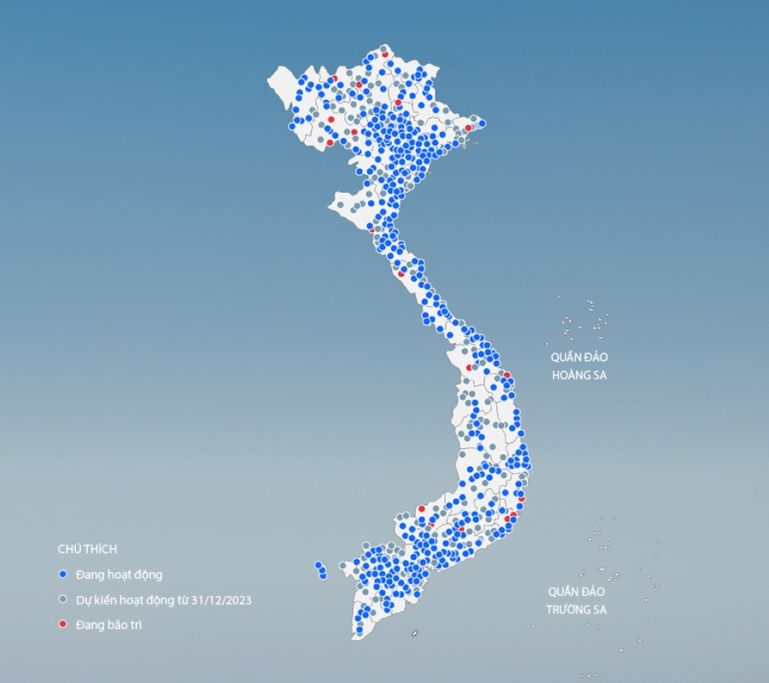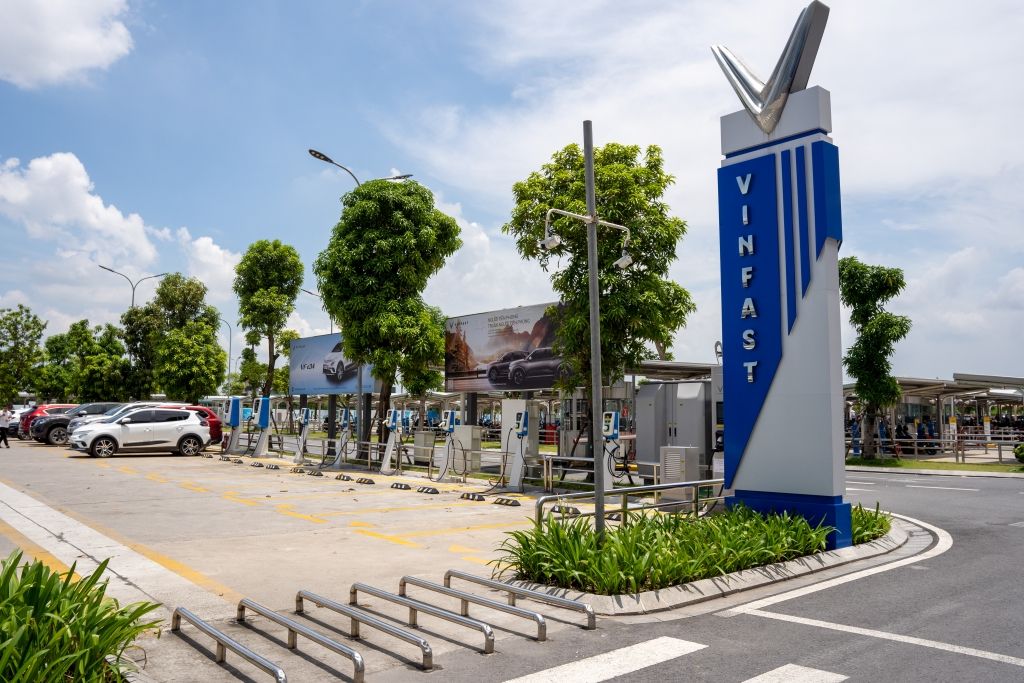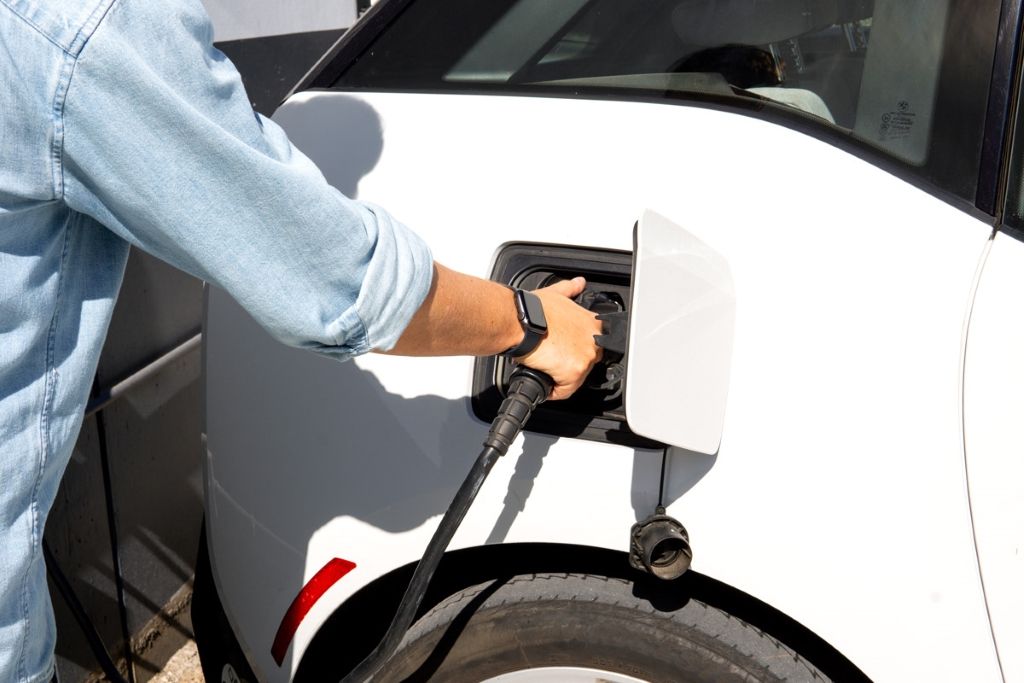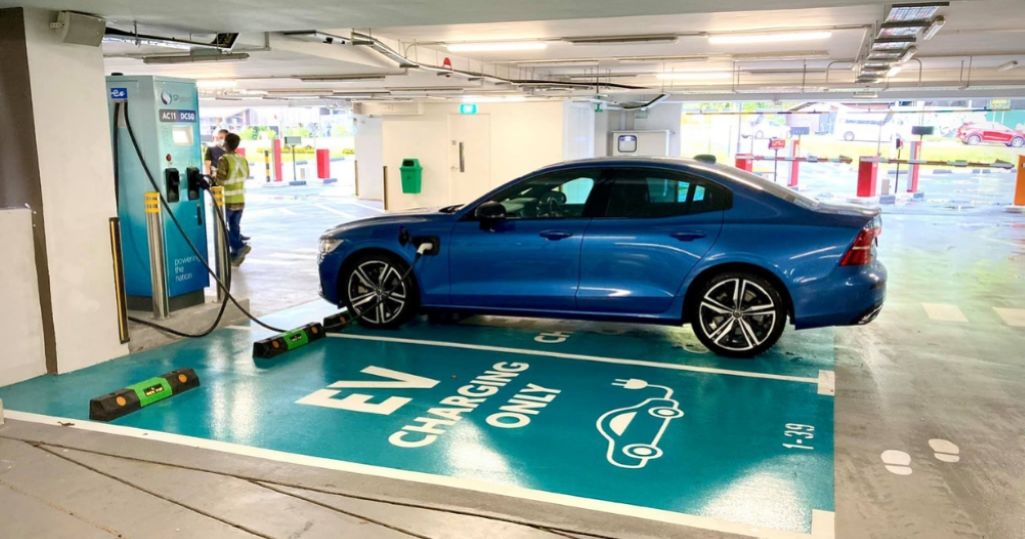Not only covering all 63 provinces, but also being present on 106 national highways, VinFast’s charging station network has significantly increased its coverage in major cities and central areas, with a dense station density of only 3.5 km apart in 80 out of 85 cities nationwide.
VinFast solves the “dual challenge” of charging stations in Vietnam
Since announcing the focus on electric vehicle development, VinFast has recognized the importance of building a charging station network by investing hundreds of millions of USD to build infrastructure. In a short period of time since delivering the first electric vehicle model VF e34, VinFast’s electric vehicle charging system has covered all 63 provinces.
This result was demonstrated when, since March 2022, two VinFast VF e34 vehicles completed a cross-country journey. Starting from Hanoi, driving over 1,970 km and stopping 11 times to recharge and rest, the two electric vehicles arrived in Ho Chi Minh City after 48 hours. It can be said that VinFast has successfully achieved the first step in “broadening” the charging station network for electric vehicles.
VinFast’s public charging station system has been present in 80 out of 85 cities with a distance of no more than 3.5km between stations
However, the challenge does not stop there, as the demand for electric vehicles in each location is different. Similar to most car models in general, the ownership and usage rate of electric vehicles in major cities and central areas will be higher, requiring a greater number of charging stations.
That’s why, after “broadly” expanding the charging station network nationwide, VinFast continues to aim for the second goal of “densifying” the network. Currently, VinFast’s public charging station system has been deployed in 80 out of 85 cities nationwide. The distance between 2 charging stations in urban areas is no more than 3.5 km, allowing customers to recharge their vehicles in just a few minutes of travel.
Thus, VinFast is gradually providing solutions to both challenges in the electric vehicle charging station puzzle. VinFast’s charging station system has been implemented on 106 national highways and expressways, with various power capacities, from standard charging to super fast charging, making long-distance interprovincial travel by electric vehicles simple and convenient. In cities and central areas, customers can easily find charging stations everywhere, from public parking lots to shopping centers, residential buildings, and office buildings.
Customers can easily find VinFast’s public charging stations in many locations
Combined with the use of home chargers, VinFast electric vehicle owners can confidently use their vehicles on any journey across the country. This is a significant advantage for VinFast compared to other competitors who are also planning to introduce electric vehicle models in Vietnam but have not yet solved the “dual challenge” of charging stations.
VinFast’s charging station network puts Vietnam at the forefront of electric vehicle infrastructure
The investment of VinFast in the charging station system demonstrates a long-term strategic vision for electric vehicle development in the Vietnamese market. This also highlights the global perspective of the Vietnamese electric vehicle manufacturer, as the construction of electric vehicle charging infrastructure is still in its early stages worldwide.
The United States is an example. It is considered a leading country in electric vehicle development and has good infrastructure, but the US is also facing many issues regarding the charging station puzzle. One of them is meeting the demand for charging electric vehicles in major cities, central areas, or especially in condominiums and high-rise buildings due to the high density of electric vehicle usage in these locations.
The United States is a strong electric vehicle market but is also facing a shortage of charging stations
To promote the installation of charging stations in condominiums, more than 10 states in the US have passed the Right To Charge laws. The laws vary depending on the state, but all prohibit building owners and Homeowner Associations (HOAs) from preventing residents from installing and using electric vehicle chargers, while also specifying the requirements for proper charger installation.
In Europe – the second largest electric vehicle market in the world, the UK has issued amended building regulations for installing electric vehicle charging points or cables, effective from June 2022. The regulations include new requirements such as: every new residential building parking lot must have a charging point, residential areas with more than 10 parking spaces must have at least one electric vehicle charger, etc.
In Norway, known as the “capital” of electric vehicles in Europe, since 2016, the Ministry of Transport has issued regulations requiring a minimum allocation of 6% of charging areas for electric vehicles in new buildings and parking lots.
In Singapore, charging electric vehicles largely depends on public charging stations
In Asia, Singapore is a country with many similarities to large cities in Vietnam, as the majority of its 5.4 million inhabitants live in high-rise condominiums. Therefore, charging electric vehicles largely depends on public charging stations. The Singaporean government is making great efforts to achieve the goal of having 40,000 public charging ports by 2030.
One of the solutions proposed by the Singaporean government is the enactment of electric charging laws, which require new buildings to install chargers at a minimum of 1% of the total parking spaces. Alongside this, the electricity infrastructure also needs to meet the necessary capacity.
TH (Tuoitrethudo)













































